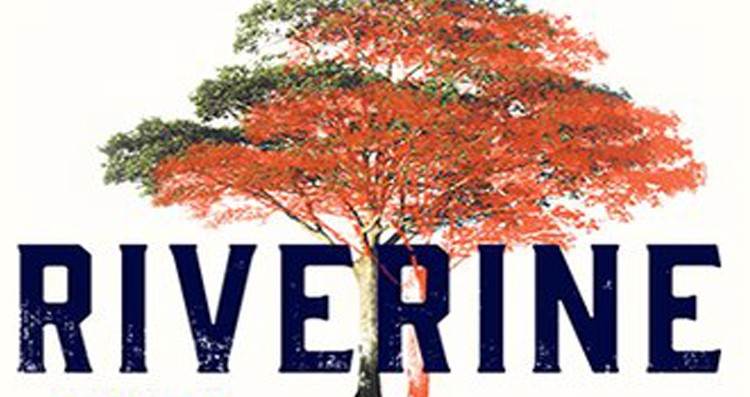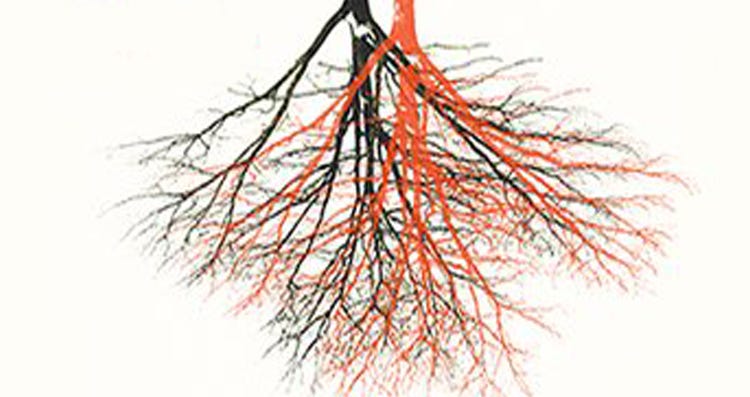Books & Culture
On Gnarly Floods and Mass Incarceration: Can We Reroute Our Future?
Graywolf non-fiction prize winner explores her tumultuous childhood in rural Indiana

Angela Palm’s childhood home in the rural town of Hebron, Indiana was built on a rerouted riverbed, where the Kankakee once flowed. In the opening chapter of her Graywolf Non-Fiction Prize winning memoir, Riverine: A Memoir from Anywhere but Here, Palm recounts how her father paddled a rowboat from their doorstep to the school bus every morning during flood season. She relishes in the pride her father and neighbors took in recounting stories of the how they conquered past floods. She recalls her fondness for these rituals as well as her childlike knowledge of the danger the flood imposed upon the town. From her vantage point as an adult, Palm calls nature “violent” and “taunting.” The fractured site of Palm’s childhood represents both the human ability to engineer the land, and, by extension, destiny, as well as the fragility of human life in the face of an unyielding environment.
Like the landscape of Palm’s youth, her belief system is subject to drastic change. She tests out various religions, from Methodist to Catholic, attending “a dozen different churches or more” by the age of thirteen. While Palm experiments with different modes of consciousness, she is also aware of how the futures of others are seemingly incapable of being rerouted. This concept is most pointedly illustrated by tragic story of Corey, Palm’s childhood neighbor, crush, and ultimately lifelong friend, who was sentenced to life in prison for murder as a young man. Poverty, parental neglect, and drug use led Corey to spend four of his formative years in juvenile detention centers for “crimes that rich kids had been let off for.” Palm speculates: If Corey had more support and guidance, “would it have gone this far?”
The message being, people who err are not inherently bad; more so, our society cruelly dictates the outcomes of our lives and this statement becomes a refrain, especially in relation to Corey’s incarcerated status. “To me, inmates were regular people,” Palm writes, “who had been caught doing something society deemed impermissible and who had likely had some misfortunes along the way.” Palm emphasizes the corruption of the US prison system, specifically its catering to privatized companies and values profit over rehabilitation. Despite human attempts to redirect, socioeconomic status, like weather, is shattering.
When Palm volunteers for Habitat For Humanity, the presence of flood rears again in Palm’s adult life, helping repair Hurricane Floyd’s damage to North Carolina homes. While there, she witnesses first-hand the devastation of natural disaster, and the human inability to quell or control it. She enters a house destroyed and gutted by water damage, where the only undamaged object is a 2-Pac poster in the living room, hung high enough to have evaded the water. The presence of the poster in the house represents the intersection of environmental and social determinism: 2-Pac could not escape “the current” of crime and violence that ultimately claimed his life, just as homeowners were unable to ward off the flood.
Palm presents a drastically different outlook in the last section of her book, Mountains, which chronicles her experience at a writer’s retreat at the Robert Frost estate. While her first two sections, Water and Fields, emphasize how tied we are to our physical environment and origin and feature clinical, analytical analysis, Mountains argues for our ultimate detachment and uses dreamier, more poetic language. Palm notes the significance of her location while acknowledging that the environment exists entirely separately from her entanglements and associations with it. “The trees are not poems, never have been, do not contain poems, never have contained them,” Palm writes. Although this sentiment would seem discouraging and averse to the purpose of a writers retreat, Palm revels in the freedom of experiencing objects not through their associations, but as themselves in their raw and pure form.

Although Palm states that “we’ll never really escape the landscapes we inhabited as our brains developed,” she chooses to focus on the blunt indifference of the land in her last section. Mountains is focused on the immediacy of physical sensation as opposed to theory meant to explain environment in relation to humans. This intentionally lopsided structure leaves the reader with multiple layers of paradox and duality: the land is malleable yet confining. Environment is integral to development and fate, but it also exists separately from human classification. At the close of the book, Palm ultimately forces the reader to reconsider her own thesis. This technique harkens back to the rerouted river of Palm’s childhood, upon which humans renegotiated the very foundation of their situation. Reader, like river, is forced to reroute.









